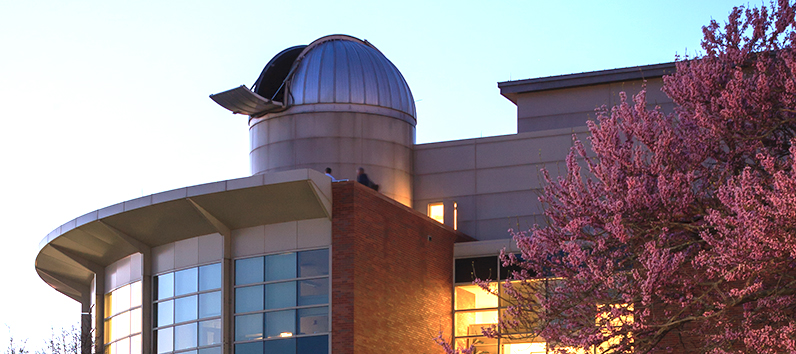This Month in the Stars
Requarth Observatory, Millikin University
The moon and stars never let us down. The most vast and unique beauty we could ever imagine is right above our heads, every single one of us.
Through all of our different point of views, one thing we have in common is the stars and the moon. A full blood moon, meteor showers, and a stunning view of mercury highlighted the month of August for stargazers everywhere. By the looks of it, September is set to be another great month in the sky and is not going to disappoint.
Millikin University is loaded with fantastic resources for the students, faculty, and staff. One of these amazing resources is the Requarth Observatory, located on campus which offers an incredible perspective of space from right here on campus. The Requarth Observatory, located in the Leighty Tabor Science Building, is home to one of the most high-powered and largest telescopes in Illinois.
The scope is 20” and the length of the whole telescope is almost 5 meters. There are also 5 smaller telescopes outside of the tower, all of which are 8” in scope.
The technology of the telescopes is breathtaking and their views are even more awe-inspiring. Through all of the telescopes, you are able to see things like the ensuing dust storm on Mars, the rings around Saturn, the individual clusters of stars in the galaxies, and much more if the sky is clear enough.
The telescopes are linked to high-powered computer platforms which offer the telescopes, in many ways, a mind of their own. The telescopes are able to map out the entire surrounding universe in its view and can identify individual planets and stars.
The month of September holds a few different celestial events.
On September 7th, the planet Neptune will be at its closest point to earth and the sun will completely illuminate big blue planet.
September 9th brings back around a new moon which will end up being a full moon in Aries on the 25th.
This full moon is recognized as a “Harvest Moon” and will be illuminating a brilliant white light into the night. The Harvest Moon is named so because it is close to the equinox: the time in which native tribes would harvest their crops.
That brings us to the most meaningful celestial event of the month: the Autumnal Equinox.
The equinox is when the sun shines directly on the equator, spreading equal amounts of day and night across the whole world. This is the official transition to autumn. There are two equinoxes a year, one in autumn and one in spring. As well as this, there are two solstices, one in summer and one in winter. All of these are celestial events that change our seasons here on earth.
The celestial calendar is star-studded this month and there is no better place to check it out around here than Millikin’s own Requarth Observatory. The view is incredible and is open to all students and faculty on Thursdays, opening at 7 P.M.

